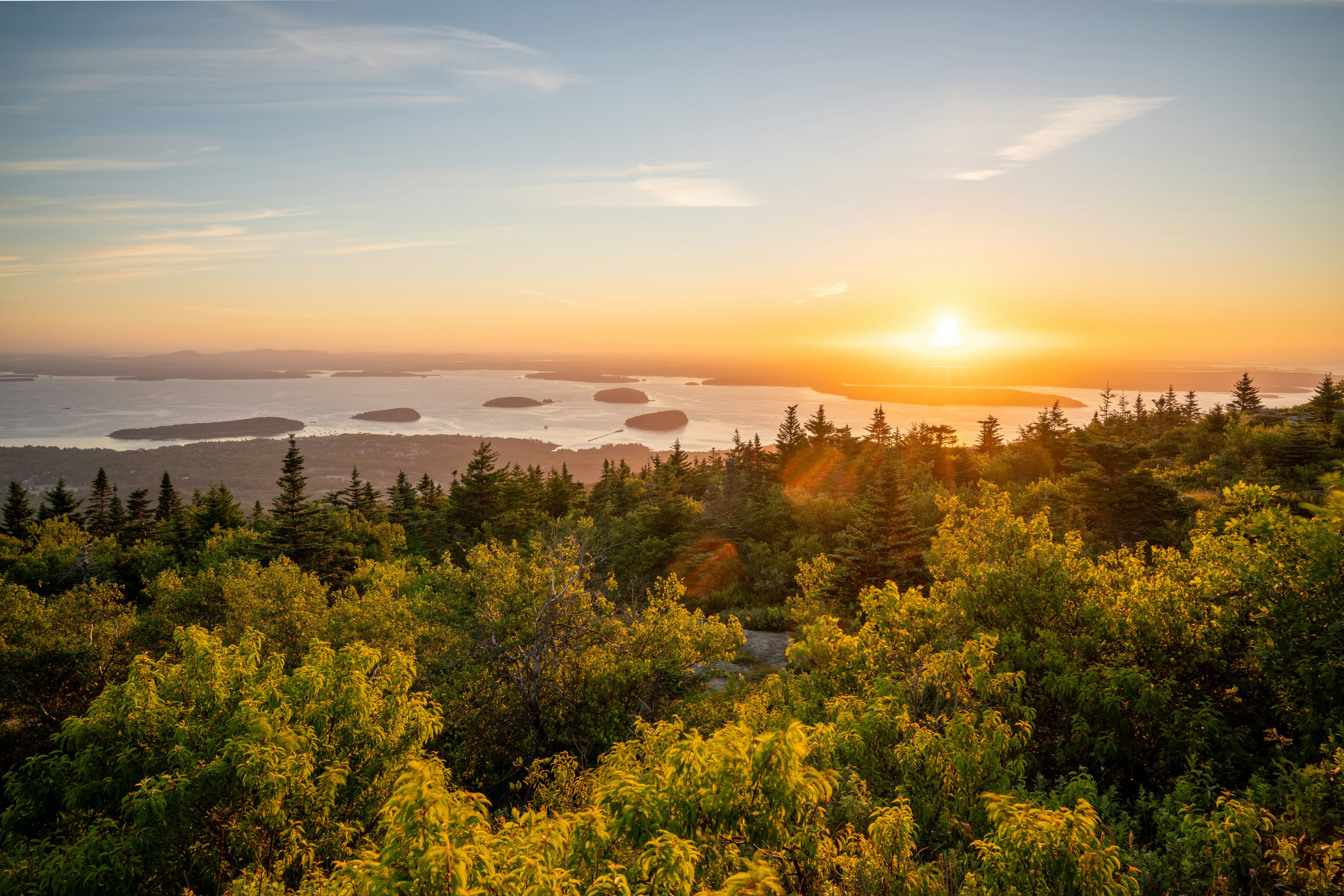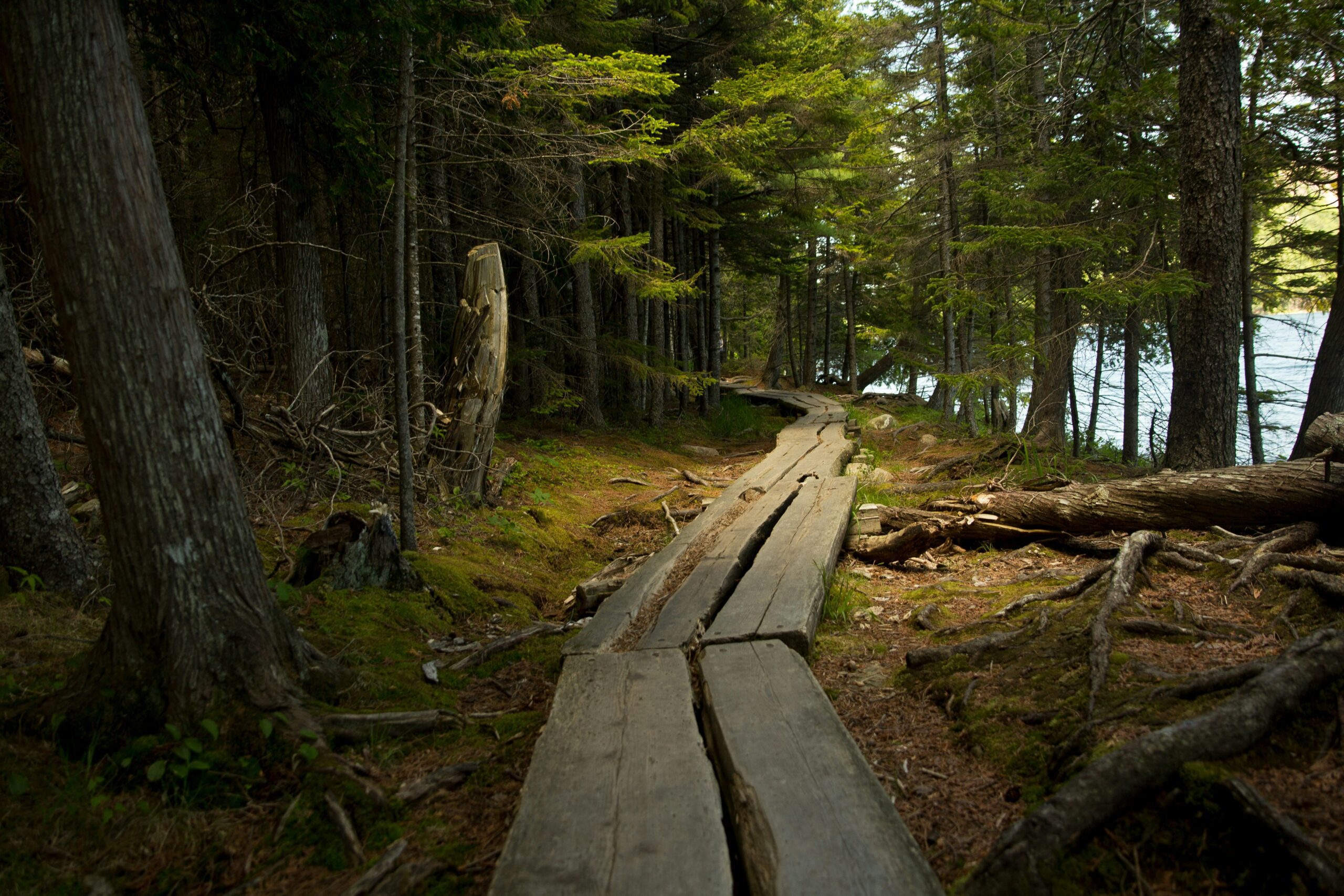–
Acadia National Park: A Visitor’s Guide to Maine’s Coastal Gem
Acadia National Park: A Visitor’s Guide to Maine’s Coastal Gem
Discover Acadia National Park
Nestled along the rugged coastline of Maine’s Atlantic shores, Acadia National Park stands as a testament to the raw beauty and unyielding spirit of the Northeastern United States. Spanning over 47,000 acres, this gem of a park boasts a diverse landscape that seamlessly transitions from rocky cliffs to dense forests, pristine lakes, and tranquil meadows. Visitors to Acadia are greeted by the iconic sight of Cadillac Mountain, where the first rays of sunlight touch the continental United States each morning, offering a breathtaking sunrise spectacle.
Throughout the park, a network of scenic carriage roads, designed by philanthropist John D. Rockefeller Jr., winds its way through the wilderness, providing opportunities for strolls, invigorating bike rides, and peaceful carriage tours. Meanwhile, over 120 miles of hiking trails crisscross the terrain, leading adventurers through enchanting woodlands, along rugged coastlines, and to the summits of majestic peaks.
Acadia’s rich biodiversity supports a plethora of wildlife, including white-tailed deer, red foxes, and various bird species, making it a paradise for nature enthusiasts and wildlife photographers alike. The park’s coastal habitats are home to seals, porpoises, and even the occasional sighting of a majestic bald eagle soaring overhead.
Top 3 Facts About Acadia National Park
01
Size and Location
Acadia National Park is located primarily on Mount Desert Island in Maine, along with several smaller islands along the Atlantic coast. It covers an area of approximately 49,075 acres (about 198.6 square kilometers).
02
Cadillac Mountain
Within Acadia National Park, Cadillac Mountain stands as the tallest peak on the United States’ East Coast. Its summit, at 1,530 feet (466 meters) above sea level, offers spectacular views, especially during sunrise. It’s renowned for being one of the first places in the U.S. to see the sunrise during certain times of the year.
03
Wildlife Diversity
Acadia National Park is home to a diverse array of wildlife. Visitors to the park may encounter species such as white-tailed deer, red foxes, black bears, moose, and various bird species including peregrine falcons, bald eagles, and several types of seabirds.
Camping and transportation in Acadia National Park
How to Get to Acadia National Park
To get to Acadia National Park in Maine, you typically travel to Mount Desert Island, where the park is located. Here are some common ways to reach Acadia National Park:
- By Car: Most visitors arrive by car. If you’re coming from the south, you can take Interstate 95 to Bangor, Maine, then follow Route 1A to Ellsworth, where you’ll pick up Route 3 to Mount Desert Island. If you’re coming from the north, you can take Route 1 to Route 3 from Bucksport to Mount Desert Island. Once on the island, follow signs to the park entrances.
- By Plane: The closest major airport is Bangor International Airport (BGR), located about 50 miles northwest of the park. From there, you can rent a car or arrange for shuttle services to reach Acadia National Park.
- By Ferry: During the summer months, you can take a ferry from Bar Harbor to the Cranberry Isles or to Winter Harbor/Schoodic Peninsula, which is part of Acadia National Park. This option provides a scenic approach to the park.
Places to Stay Near Acadia National Park
- Blackwoods Campground: Just a stone’s throw from Bar Harbor, Blackwoods is a hit for its proximity to the park’s highlights. Reserve a spot for your tent or RV, but remember, summer spots fill up quickly!
- Seawall Campground: Prefer the soothing sound of waves while you snooze? Seawall, located near the quaint town of Southwest Harbor, is your go-to. It offers spacious campsites and access to stunning ocean vistas.
- Schoodic Woods Campground: Seeking a more serene setting? Schoodic Peninsula, northeast of Mount Desert Island, has a campground that is a bit off the beaten path yet offers all the Acadia charm.
Driving
Grab your keys and set your GPS! Your scenic road trip to Acadia is just an I-95 away if you’re heading north from Boston.
Public
Acadia National Park operates a fare-free shuttle service called the Island Explorer during the peak tourist season. Outside of the Island Explorer service, there are no other public transportation options directly within Acadia National Park.
Parking
As you arrive, keep an eye out for parking signs, especially during peak season. The park does a fantastic job guiding you to available spots.
Best Time to Go to Acadia National Park
Summer
Peak visitor season hits between June and August. Acadia basks in warm weather perfect for all outdoor activities, from hiking to fishing. Just be prepared for more company on the trails, as visitor numbers typically soar up to 800,000 per month.
- Sunrise from Cadillac Mountain is a must-see, but remember to arrive early—it’s a popular spot.
- The park offers ranger-led programs that are both educational and fun for all ages.
Winter
For those who love a winter wonderland, Acadia’s quietest time is from December to February. Visitor numbers can drop to as low as 30,000 per month. Most of the Park Loop Road is closed, and snowshoeing or cross-country skiing become the main activities.
- Experience the serene, snow-covered landscapes in near solitude.
- Wildlife tracking in the snow is a unique adventure for the nature enthusiast.
Spring
As the snow melts away, Acadia begins to wake up from its winter slumber in March and April. You won’t find summer’s crowds here, making it a peaceful time to explore. However, certain facilities might not be fully operational yet.
- Early June brings an end to the muddy season, allowing you to enjoy the park without the summer buzz.
- Birdwatching is particularly remarkable in spring with a symphony of songbirds returning home.
Fall
September through November is when Acadia truly dazzles with its famed fall foliage. This is the golden hour for photographers and leaf peepers.
- September combines the tail-end of warm weather with lighter crowds post Labor Day.
- By mid-October, the park is a canvas of reds, oranges, and yellows, showcasing nature’s artistry at its finest.
- Visitor numbers in September are a relief from summer’s peak, but expect a slight increase due to cruise ship arrivals.
Must-See Attractions
Helpful Tips: Making the Most of Your Adventure to Acadia National Park
Plan Ahead
The Hulls Cove Visitor Center is your go-to for trip planning. Grab maps, check trail closures, and get the latest on peregrine falcon nesting areas to avoid.
Pack Appropriately
Pack layers and be prepared for changing weather conditions, even in summer.
Respect Wildlife
Seeking thrills on trails with ladders and iron rungs, like the Precipice? Pack your bravery and respect any closures for falcon nesting.
Stay Informed
Check for any seasonal road closures or trail conditions before embarking on outdoor activities.


Frequently Asked Questions about Acadia National Park
You’ll find that September is the golden month for visiting Acadia National Park. The weather is generally mild, fall foliage begins to pop, and summer crowds have thinned out, giving you a more serene experience.
Acadia National Park boasts a diverse terrain that includes rocky coastlines, lush forests, and striking mountain peaks, like Cadillac Mountain – the first place to catch the sunrise in the U.S. The park’s unique landscape is a visual feast not to be missed.
To really soak in Acadia’s beauty, plan for at least three to four days. This gives you ample time to hit notable spots like Jordan Pond, Thunder Hole, and the Sand Beach without rushing.
The Park Loop Road is a 27-mile journey brimming with picturesque vistas. Don’t miss the stretch leading to Cadillac Mountain’s summit for a breathtaking panoramic view.
First, beat the crowds by starting your day early. Also, check out lesser-known trails to find your own slice of peace in nature. And always remember to pack layers – the weather can be quite playful here!
From rustic campgrounds to cozy bed and breakfasts, there’s a range of stays to suit your style near Acadia. Bar Harbor has numerous options, while the surrounding towns offer lodgings just a stone’s throw from park entrances.